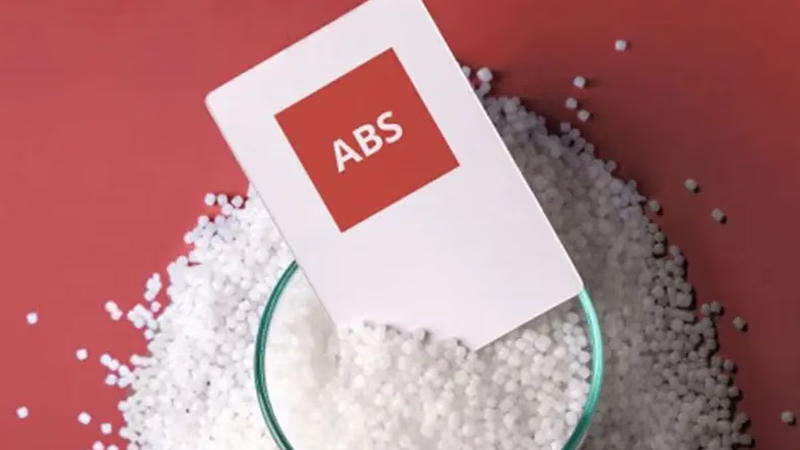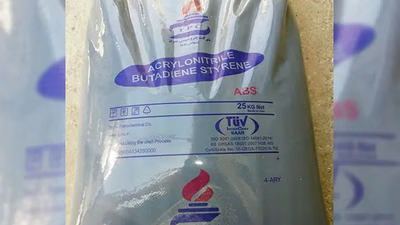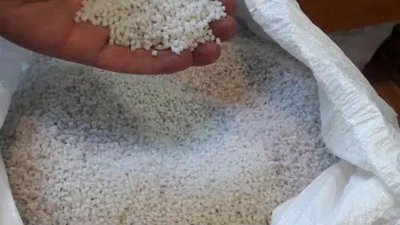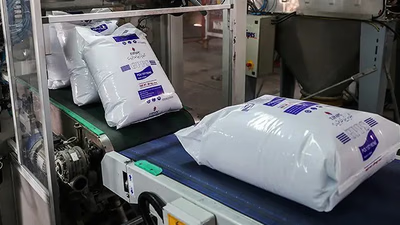
Acrylonitrile Butadiene Styrene: Durable polymer for various industries.
Acrylonitrile Butadiene Styrene (ABS) is a common thermoplastic polymer known for its toughness, impact resistance, and dimensional stability. It is a copolymer composed of three monomers: acrylonitrile, butadiene, and styrene. ABS combines the desirable properties of these three components to create a versatile material widely used in various industries. This monomer provides ABS with chemical resistance, heat resistance, and hardness. It enhances the material's overall strength and stability. Butadiene is responsible for ABS's impact resistance and toughness. It gives the material the ability to withstand sudden shocks or impacts without breaking or cracking.
Styrene contributes to ABS's rigidity, processability, and surface finish. It improves the material's ability to be molded into complex shapes and provides a smooth, glossy surface. ABS is commonly used in consumer electronics, such as computer keyboards, gaming controllers, and phone cases. It is also utilized in household appliances, toys, and automotive parts. ABS finds applications in the construction industry for pipes, fittings, and profiles. It is used in architectural models, signage, and decorative elements.
ABS plastic is one of the most important and widely used commercial polymers. Its full name is acrylonitrile butadiene styrene, which is an expensive and amorphous matte polymer. This polymer is used in the automotive industry, in the production of electrical appliances and in the manufacture of home appliances, including vacuum cleaners, telephones, tea makers, etc.
As the full name of this polymer suggests, ABS is composed of three components: acrylonitrile, butadiene and styrene, which can be modified by changing the percentage of each of these monomers. ABS plastic can be produced in different ways. One of these methods is by combining the mechanical copolymer of butane-DN-acryl nitrate (BAN) with the styrene-acryl-nitrate (SAN) copolymer. The production of ABS by any method will eventually lead to the production of a polymer that will have better properties and higher impact resistance than polystyrene.
ABS can be machined using conventional methods such as cutting, drilling, and milling. It offers good machinability, allowing for the production of precise and intricate components. ABS is known for its excellent impact resistance, meaning it can withstand sudden impacts or mechanical stresses without breaking or shattering easily. This property makes ABS suitable for applications where durability is essential. As mentioned earlier, ABS is composed of three monomers with different characteristics and the combination of these three monomers has created a polymer that has excellent mechanical, thermal and electrical properties. Among the many properties of ABS plastic, the following can be mentioned:
- It has a low price. Insulated against electric current. Stable and rigid
- Very good welding and paint-ability and good machining and high impact resistance
ABS is relatively inexpensive compared to other engineering thermoplastics, making it a cost-effective choice for various applications. ABS has good electrical insulation properties, making it suitable for applications where electrical conductivity or insulation is required. ABS exhibits stability and rigidity, providing dimensional stability and structural integrity to the finished products. ABS can be easily welded using various techniques such as solvent welding, making it convenient for joining ABS parts. It is also receptive to paints and coatings, allowing for customization and aesthetic enhancement.
ABS is used in various automotive components, including interior trim, dashboard parts, exterior body panels, and wheel covers. Its impact resistance and dimensional stability make it suitable for these applications. ABS is one of the popular materials for 3D printing due to its strength, durability, and ease of use in the printing process. It's worth noting that while ABS possesses numerous advantageous properties, it is not suitable for all applications. It may not offer the same level of chemical resistance as certain engineering plastics, and it can experience degradation when exposed to prolonged sunlight or high temperatures. Therefore, it is essential to consider the specific requirements of the intended application when selecting a material.
-

ABS polymer is widely utilized in the automotive sector for injection-molded components, including interior and exterior parts like dashboard panels and bumper covers. Its applications extend to electronic enclosures, consumer goods, and various household items due to its moldability and aesthetic appeal. The affordability of ABS makes it a preferred choice in the plastic injection industry. Additionally, ABS"s structural diversity allows for various properties, enabling manufacturers to create products with different shapes and uses. The polymer is also employed in appliance components, toys, recreational products, and certain medical devices due to its durability, impact resistance, and chemical resistance. Innovations such as MBS alloy have emerged to enhance ABS"s properties, offering alternatives with high transparency but lower tensile strength. Overall, ABS remains a versatile material in plastic injection molding across multiple industries.
-

Asia"s abundant reserves of acrylonitrile, butadiene, and styrene make it a prime location for ABS polymer production. Countries like South Korea, Taiwan, and Japan have advanced petrochemical industries supported by significant investments in infrastructure and technology. Major producers such as LG Chem, Chi Mei Corporation, and Formosa Plastics Corporation leverage their proximity to raw materials and major markets to reduce costs and enhance delivery efficiency. The region"s favorable policies promote growth in the petrochemical sector, further boosting ABS production capabilities. In the Middle East, companies like Tabriz Petrochemical and Ghaed-Basir Petrochemical also contribute to ABS manufacturing. The demand for ABS is rising due to rapid industrialization across Asia, with applications spanning automotive, electronics, and construction sectors. Competitive pricing is achieved through lower labor costs and efficient supply chain management. However, challenges such as recycling contamination need addressing to maintain quality in recycled ABS products.
-

Acrylonitrile Butadiene Styrene (ABS) is a widely used thermoplastic polymer known for its toughness, impact resistance, and dimensional stability. Composed of acrylonitrile, butadiene, and styrene, ABS combines the strengths of these monomers to create a versatile material suitable for various industries. Its properties include chemical resistance, heat resistance, and hardness from acrylonitrile; impact resistance from butadiene; and rigidity from styrene. ABS is prevalent in consumer electronics like keyboards and phone cases, as well as in automotive parts, household appliances, and construction materials. The polymer"s machinability allows for precise component production through conventional methods such as cutting and drilling. ABS is also cost-effective compared to other engineering thermoplastics and offers good electrical insulation properties. However, it may not be suitable for all applications due to its limited chemical resistance and potential degradation under prolonged sunlight or high temperatures. Therefore, careful consideration of application requirements is essential when selecting ABS. "
-

ABS polymer offers significant advantages for plastic injection molding, including excellent impact resistance, ease of processing, and good flow properties. Its versatility allows for modifications to enhance specific characteristics, making it suitable for various applications. ABS provides a smooth surface finish, reducing the need for additional finishing processes. It also exhibits good chemical resistance, making it ideal for environments where contact with different substances is common. However, ABS has notable disadvantages such as a low melting point, which limits its use in high-temperature applications like medical implants. Its resistance to corrosion and UV rays is also low, leading to potential degradation over time when exposed to sunlight or harsh conditions. Additionally, ABS can warp during cooling and has moderate shrinkage that requires careful design considerations during production. Despite these drawbacks, the material"s ductility and affordability contribute to its popularity in producing everyday plastic products. "
-

ABS plastic is valued for its mechanical properties, including toughness, impact resistance, and rigidity, making it ideal for various industrial applications. Its thermal stability allows it to maintain performance under temperature fluctuations, while its chemical resistance enables use in environments with exposure to acids and oils. ABS is widely utilized in the automotive sector for components like dashboards and bumpers due to its durability and moldability. In consumer electronics, it serves as a material for housings and connectors. Additionally, ABS is popular in 3D printing for creating prototypes and functional parts. Despite some disadvantages such as flame sensitivity and opacity, these can be mitigated through alloying with other materials. The ease of processing ABS through methods like injection molding enhances its appeal across industries, including household appliances and construction. Its versatility allows customization to meet specific application needs.





